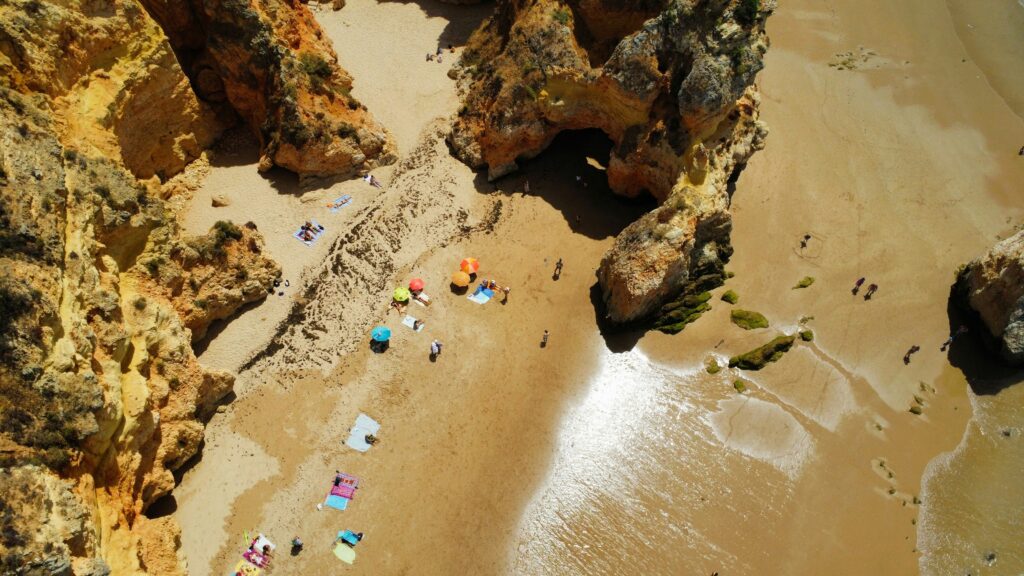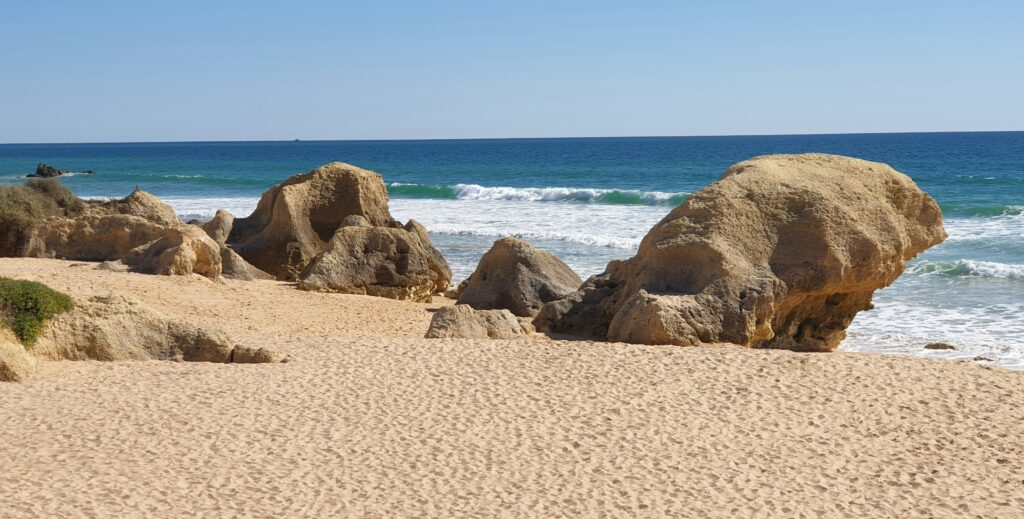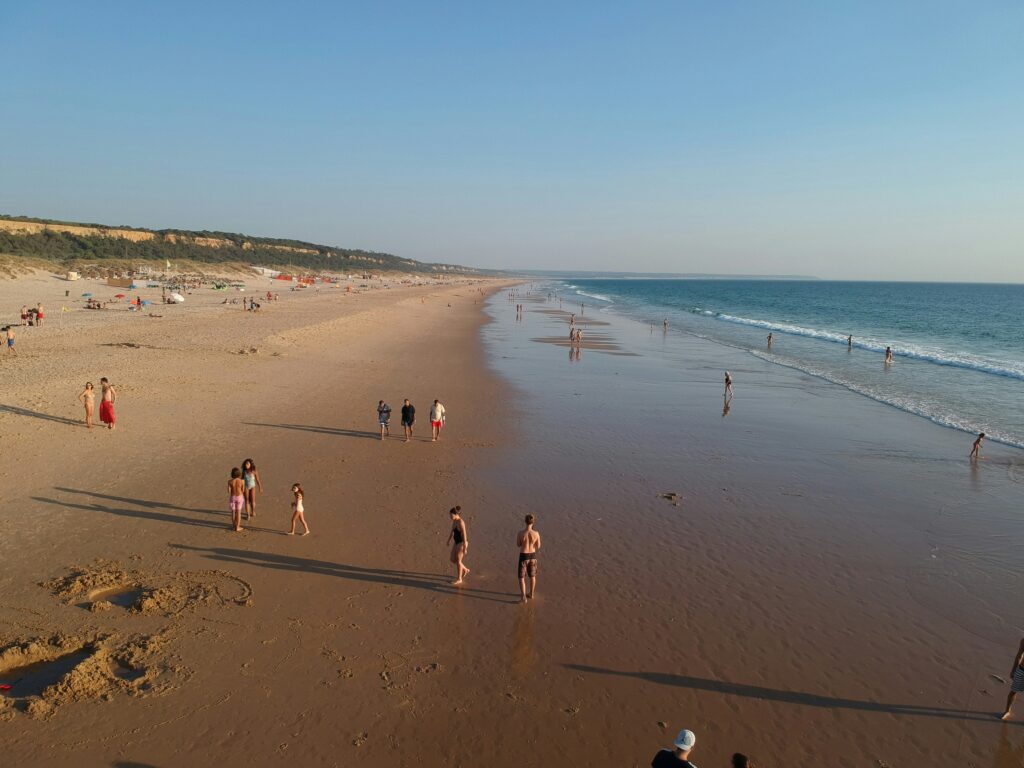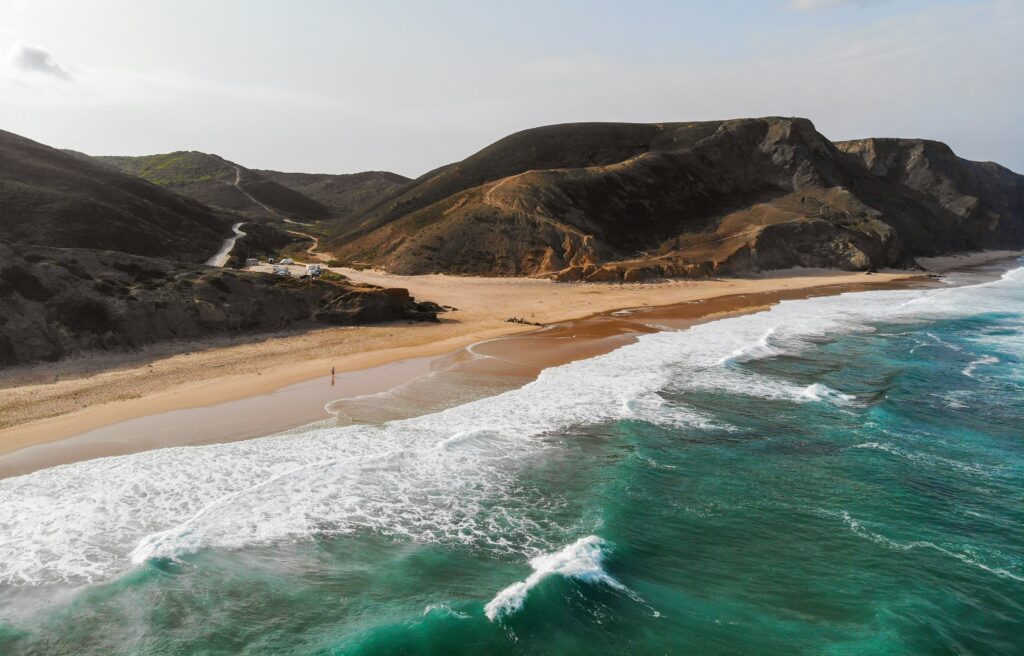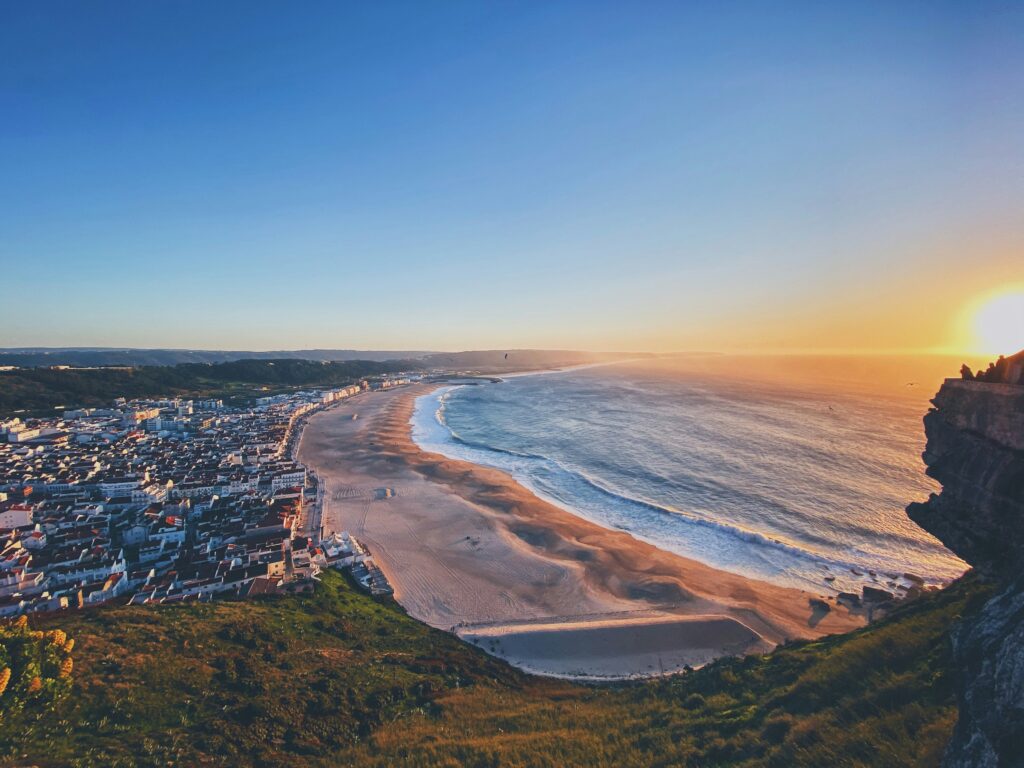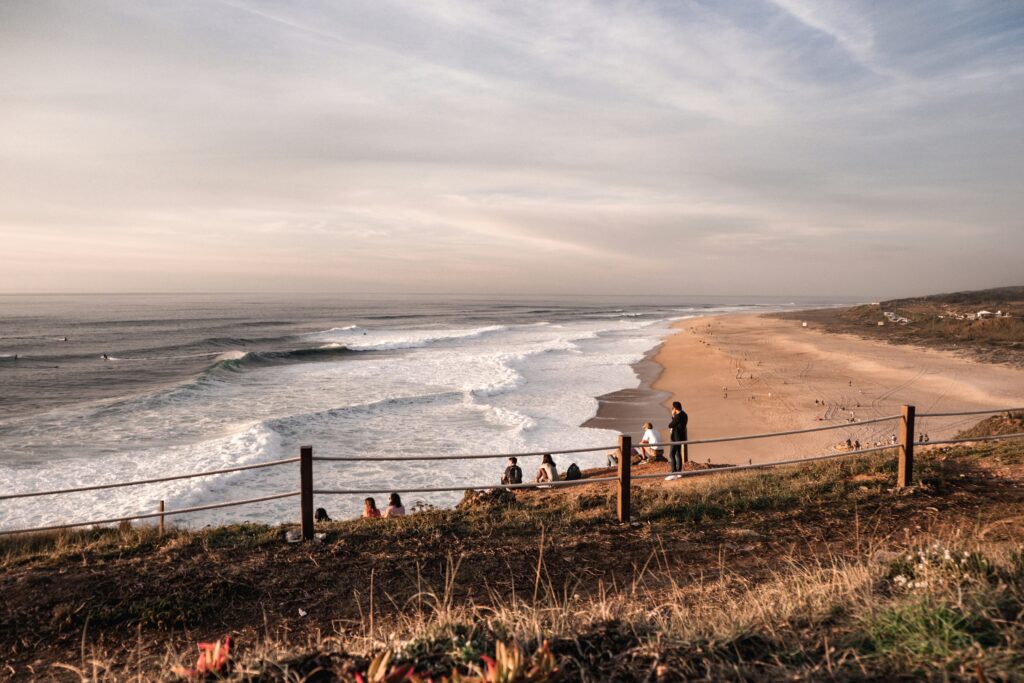Over the past decade, Portugal has evolved from a quiet surf destination to one of Europe’s most complete wellness hubs.
Nowhere else combines raw Atlantic energy with such a grounded, unpretentious lifestyle.
Here, surf and yoga retreats have grown organically from two parallel cultures — the surf camps of the 90s and the yoga communities of Lisbon and Ericeira — until they merged into a single idea: balance through movement and nature.
If you’re considering a surf-and-yoga retreat in Portugal but wonder what really happens beyond the marketing images, this guide unpacks how they work, what to look for, and how to know whether it’s the right kind of reset for you.
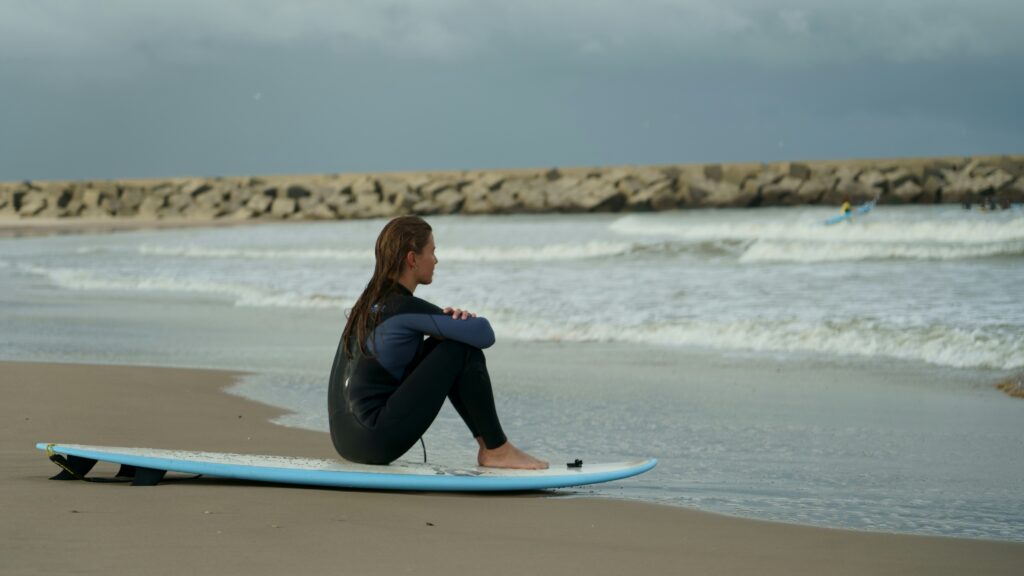
Why Portugal has become Europe’s “natural studio”
The Atlantic coastline stretches for more than 800 km, dotted with consistent reef and beach breaks, warm light, and a rhythm of life that still follows the tide.
Unlike tropical surf destinations, Portugal’s scene is accessible, affordable, and surprisingly quiet outside the summer months.
Add to that a climate that allows outdoor practice nine months a year, and you have a natural classroom for yoga and surf alike.
Yoga arrived here early. Lisbon’s expat and creative community began holding open-air classes in parks and warehouses long before wellness went mainstream.
When surf camps started adding morning mobility sessions, teachers realized how perfectly the two disciplines complemented each other: both build balance, breath awareness, and humility.
That mix is what now defines the country’s best retreats.
Regions that shape the experience
Ericeira – The heart of surf culture
Located just 45 minutes from Lisbon, Ericeira is Europe’s first World Surfing Reserve.
Its seven main breaks — Ribeira d’Ilhas, Coxos, Pedra Branca, and more — create a playground for all levels.
Most retreats here are boutique-style: small eco-houses on the cliffs, vegetarian meals, vinyasa in the morning, restorative yoga after sunset.
Because of its creative community, you’ll find meditation teachers, photographers, and digital nomads mixing easily with surfers.
It’s ideal if you want energy, conversation, and ocean proximity without chaos.
Alentejo – The slow coast
South of Lisbon begins a stretch of raw coastline that still feels untouched.
Villages like Zambujeira do Mar or Odeceixe host retreats focused on quiet strength and minimalism: fewer sessions, longer walks, simple food, and vast silence.
Here, yoga often moves outdoors — on wooden decks facing the dunes — and surf lessons are intimate, guided by locals who’ve lived by the waves all their lives.
If you want depth and solitude, this is your rhythm.
The Algarve – Sun, comfort, and flow
Further south, the Algarve attracts travelers who want warmth and softness.
Think golden cliffs, turquoise water, and cozy guesthouses hidden behind lemon trees.
Retreats here tend to balance comfort with play: two surf sessions per day, creative vinyasa, optional massages, and a glass of local wine at dinner.
It’s less ascetic, more sensual — perfect if your idea of wellness includes pleasure and sunlight.
Northern Portugal – Under-the-radar and authentic
North of Porto, around Esmoriz and Viana do Castelo, lies a quieter surf scene with green hills and colder water.
Retreats here are community-run and eco-driven.
You’ll find cold-water plunges, breath-training workshops, and teachers blending traditional yoga with somatic movement.
This region suits travelers who want authenticity over trend and don’t mind cooler mornings.
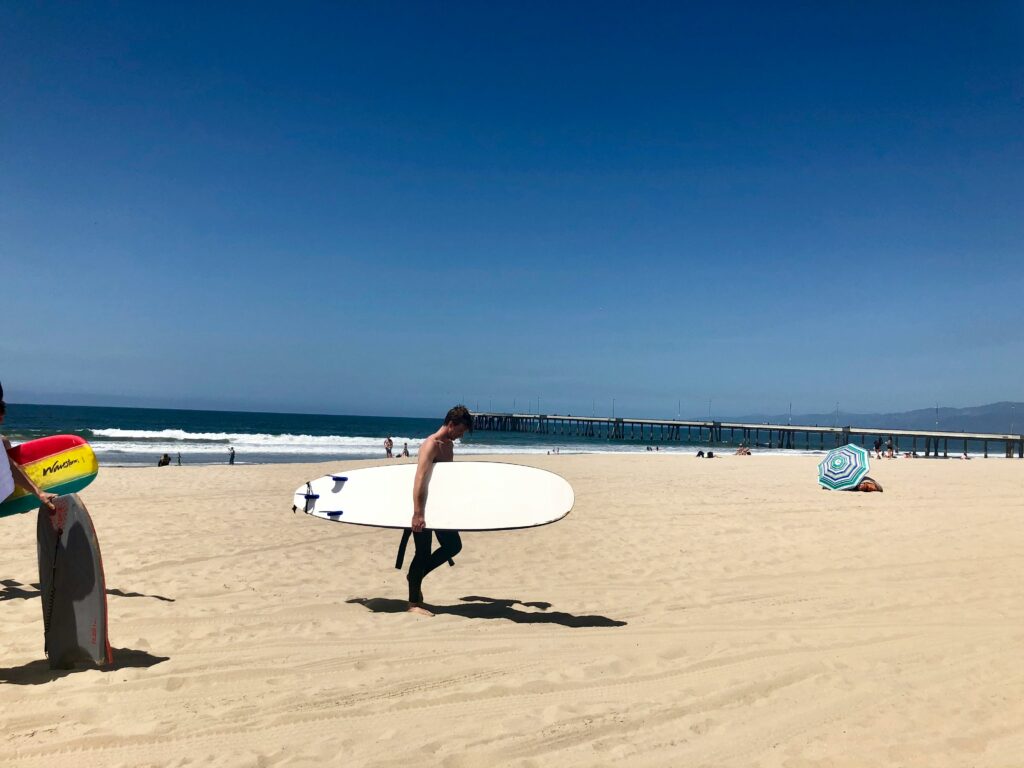
What actually happens each day
A typical 7-day surf-and-yoga retreat in Portugal isn’t about rigid schedules; it’s about rhythm.
Here’s what most programs share:
- Early mornings start with breathwork or meditation. The Atlantic air is crisp, and light pours in sideways through the windows.
- Morning yoga sessions (usually vinyasa or dynamic hatha) prepare muscles and joints for surf — hip mobility, shoulders, and core stability.
- Breakfast is simple and nourishing: oats, fruit, local honey, strong Portuguese coffee.
- Surf lessons follow the tide. Certified instructors adapt spots daily, ensuring safety for beginners and challenge for advanced surfers.
- Afternoons bring rest or workshops — pranayama, journaling, or theory on reading waves and tides.
- Evenings shift to yin or restorative yoga, sometimes followed by sound baths or group reflection circles.
- Dinner is communal, freshly cooked, and often plant-based.
- Nights are quiet. You fall asleep to ocean noise instead of notifications.
The design seems simple, but it creates an almost cellular change: your body starts syncing to natural cycles again.
Who it’s really for
Many people hesitate, assuming they need to be either surfers or advanced yogis.
They don’t. Most participants are beginners in one practice and curious in the other.
The crossover is the point: surfing trains resilience and letting go; yoga brings awareness and recovery.
Together they build physical intelligence — the ability to sense when to push, when to yield.
It’s also popular among people in transition: professionals between jobs, couples recalibrating, solo travelers rebuilding confidence after burnout.
What unites them is a desire for embodied reset, not escape.
Understanding the different types of programs
Not all surf-and-yoga retreats are alike. They generally fall into three categories:
- Community retreats (budget-friendly)
Shared dorms, simple meals, and large classes. Expect around €600–€900 for a week. Ideal for younger travelers and social energy. - Boutique eco-retreats
10–14 guests, private or twin rooms, organic food, experienced teachers. Prices from €1 200–€1 800. You’re paying for attention, not luxury. - Holistic or premium retreats
Add-ons like coaching, bodywork, or nutrition plans. Often in architect-designed villas. €2 000 – €3 000+. Great for those treating wellness as an annual reset.
Knowing your intention — skill, rest, or transformation — helps you match format to mindset.
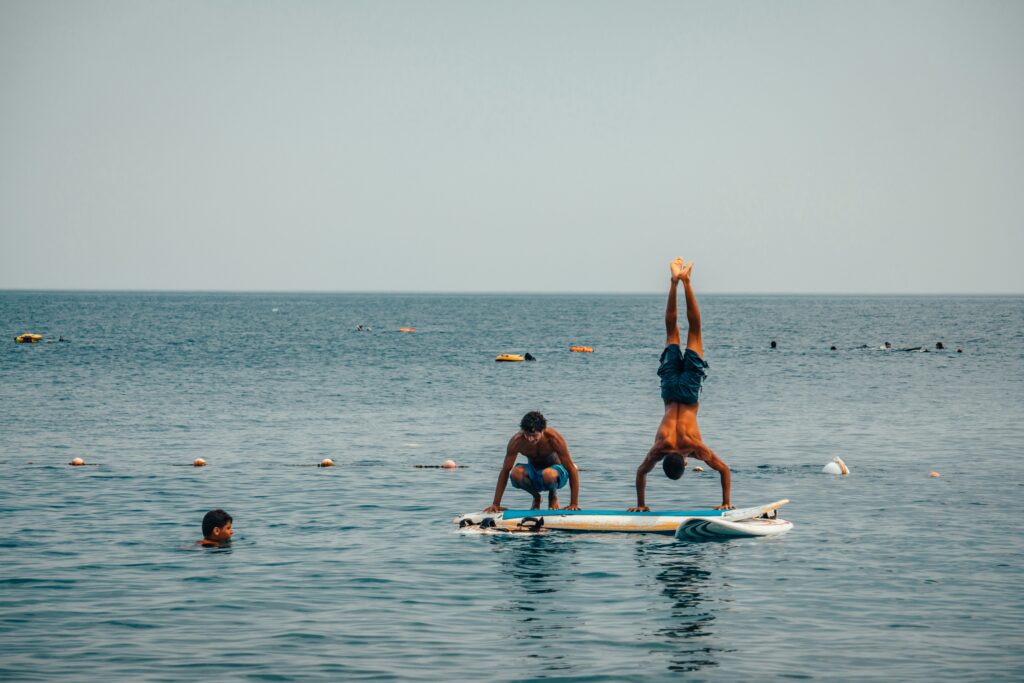
What to bring (and what to leave behind)
Bring: a sense of humor, a good rash guard, biodegradable sunscreen, and an open body.
Leave: expectations of control.
The ocean decides more than the schedule does.
And that’s the lesson — flexibility isn’t just for the mat.
Most retreats provide mats, surfboards, and even wetsuits.
Pack light: two swimsuits, a warm layer for mornings, and something comfortable for savasana.
Your goal isn’t to look prepared; it’s to become receptive.
The invisible benefits
Participants often speak of physical change, but what stays longer is the mental re-patterning.
After a few days, your inner dialogue slows.
Wave after wave teaches humility; missed take-offs teach patience; silence between sets becomes meditation.
By the end, the line between yoga and surfing dissolves — both become forms of breathwork.
Neuroscience backs it: time in natural rhythm recalibrates the circadian system, lowers cortisol, and improves focus for weeks.
That’s why returning home feels different — not dreamy, just clearer.
When to go
Spring (April–June) and autumn (September–November) are the sweet spots.
Water is warm enough for comfort, crowds thin out, and prices are lower.
Winter brings powerful swells for advanced surfers and deeper inward energy — many retreats shift to yin or meditation programs then.
Summer, while beautiful, is busier and better for mixed-level groups or first-timers.
Final thought
Choosing a surf-and-yoga retreat in Portugal isn’t just booking a week of activity.
It’s choosing an environment that re-educates your body to move with, not against, nature.
It’s about rhythm: inhale – paddle, exhale – let go.
The ocean doesn’t care how flexible you are.
It rewards presence — the same quality yoga has been teaching for centuries.

